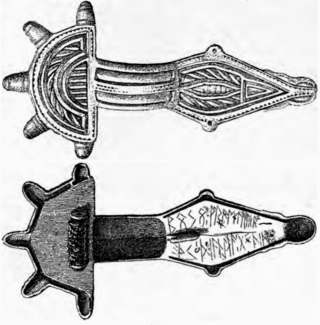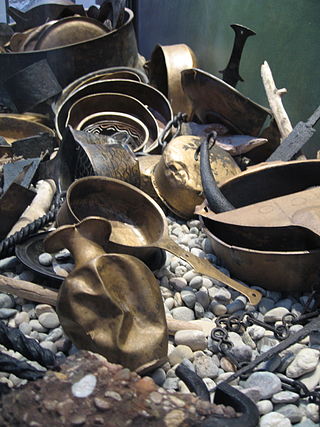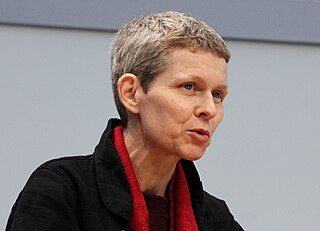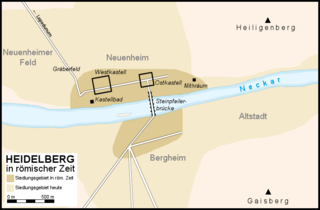External links
- Arnulf Krause at the website of the University of Bonn
Arnulf Krause | |
|---|---|
| Born | 27 November 1955 Zell im Wiesental, West Germany |
| Nationality | German |
| Academic background | |
| Alma mater | |
| Academic advisors | |
| Academic work | |
| Discipline | Germanic studies |
| Sub-discipline | Old Norse studies |
| Institutions |
|
| Main interests | |
Arnulf Krause (born 27 November 1955) is a German philologist who specializes in Germanic studies.
Arnulf Krause was born in Zell im Wiesental,Germany. He received his Ph.D. at the University of Bonn in 1989. He is a professor of Old Norse language and literature at the University of Bonn,where he also lectures in Germanic studies. Krause specializes in early Germanic literature and religion. He is the author of numerous books about Germanic peoples,Celts and Vikings.

Joachim Latacz is a German classical philologist.

Rudolf Simek is an Austrian philologist and religious studies scholar who is Professor and Chair of Ancient German and Nordic Studies at the University of Bonn. Simek specializes in Germanic studies, and is the author of several notable works on Germanic religion and mythology, Germanic peoples, Vikings, Old Norse literature, and the culture of Medieval Europe.

The Frei-Laubersheim fibula is a silver-gilt bow-style fibula found in Frei-Laubersheim, Bad Kreuznach (Rhineland-Palatinate) in 1872. The grave in which it was found dates to approximately the 6th century, and was that of a presumably Frankish woman. The fibula is one of a pair, and bears a runic inscription in the Elder Futhark.

Wolfgang Krause was a German philologist and linguist. A professor at the University of Göttingen for many years, Krause specialized in comparative linguistics, and was an authority on Celtic studies, Tocharian languages, Germanic studies, Old Norse and particularly runology.
Lutz E. von Padberg is a German historian whose specialty is medieval history and in particular the Christianization of the Germanic peoples. He is an expert on Saint Boniface, having written biographies of the saint and studies of his veneration.

The Upper Germanic-Rhaetian Limes, or ORL, is a 550-kilometre-long section of the former external frontier of the Roman Empire between the rivers Rhine and Danube. It runs from Rheinbrohl to Eining on the Danube. The Upper Germanic-Rhaetian Limes is an archaeological site and, since 2005, a UNESCO World Heritage Site. Together with the Lower Germanic Limes it forms part of the Limes Germanicus.

The Roman fort at Weissenburg, called Biriciana in ancient times, is a former Roman ala castellum, which is a UNESCO World Heritage Site located near the Upper Germanic-Rhaetian Limes. It lies in the borough of Weißenburg in the Middle Franconian county of Weißenburg-Gunzenhausen in Germany. Today the castellum is one of the most important sites of research in the Roman limes in Germany. The site contains partly subterranean building remains, a reconstructed north gateway, large thermal baths and a Roman Museum with an integrated Limes Information Centre.

The Lower Germanic Limes is the former frontier between the Roman province of Germania Inferior and Germania Magna. The Lower Germanic Limes separated that part of the Rhineland left of the Rhine as well as the southern part of the Netherlands, which was part of the Roman Empire, from the less tightly controlled regions east of the Rhine.

The Neckar-Odenwald Limes is a collective term for two, very different early sections of the Upper Germanic-Rhaetian Limes, a Roman defensive frontier line that may have been utilised during slightly different periods in history. The Neckar-Odenwald Limes consists of the northern Odenwald Limes (Odenwaldlimes), a cross-country limes with camps, watchtowers and palisades, which linked the River Main with the Neckar, and the adjoining southern Neckar Limes (Neckarlimes), which in earlier research was seen as a typical 'riverine limes', whereby the river replaced the function of the palisade as an approach obstacle. More recent research has thrown a different light on this way of viewing things that means may have to be relativized in future. The resulting research is ongoing.
The Main Limes, also called the Nasser Limes, was built around 90 AD and, as part of the Upper Germanic-Rhaetian Limes, formed the frontier of the Roman Empire in the area between the present day villages of Großkrotzenburg and Bürgstadt. In this section the limes adjoined the River Main (Moenus), which forms a natural boundary for about 50 kilometres here, so "Main" refers to the river.
The Lautertal Limes is a Roman limes section of the early 2nd century which is located between the River Neckar and the Swabian Jura. It extends for a distance of 23 kilometres (14 mi), running, straight as a die, from the present-day municipality of Köngen on the Neckar in the northwest to Donnstetten in the Swabian Jura to the southeast.

The Limesfall is the name given to the abandonment of the Upper Germanic-Rhaetian Limes in the mid-3rd century AD by the Romans and the withdrawal of imperial troops from the provinces on the far side of the rivers Rhine and Danube to the line of those rivers. It is sometimes called the fall of the limes.
Bjorn Asbrandsson was an Icelandic Viking. He appears in the Sagas of Icelanders, in particular the Eyrbyggja saga. According to Irish tradition, Asbrandsson was a farmer, warrior, exile Jomsviking and settler in North America.

Hugo Gering was a German philologist who specialized in Germanic studies.

Klaus von See was a German philologist who specialized in Germanic studies.
Elard Hugo Meyer was a German philologist who specialized in Germanic and Indo-European studies.

Eva Lüdi Kong is a Swiss sinologist, translator, and cultural mediator.
Wolfgang Kosack /'vɔlfgaŋ 'ko:zak/ is a German Egyptologist, translator and Coptologist.

During ancient Rome, a settlement of unknown name existed at the site of Heidelberg. It consisted of a fort founded around 70 AD in the present-day district of Neuenheim and a civilian settlement (vicus) that developed around the fort and also extended into the present-day district of Bergheim. The original wooden military camp was replaced by a stone fort around the year 90. In 80/90 there was a wooden bridge over the Neckar, and in 200 there was a bridge built on stone pillars. Even after the garrison of the Heidelberg fort was withdrawn around the year 135, the civilian settlement continued to flourish thanks to its favorable geographical location and developed into a prosperous pottery center. Nevertheless, Heidelberg always remained in the shadow of neighboring Lopodunum, which was the main city of the region at the time. As a result of the Alamanni invasions, Roman Heidelberg was abandoned in the 3rd century as part of the so-called Limesfall.

The Limes Gate in Dalkingen is a unique Roman triumphal monument on the Upper Germanic-Rhaetian Limes and is one of its most impressive ruins. Since 2005, the ancient border passage, which was developed into a triumphal gate under Emperor Caracalla, is a UNESCO World Heritage Site, together with the entire Roman Limes complex in Germany. It is also part of the open-air museum of the Rhaetian Limes, which was established in 1972 and also includes the nearby Buch fort and its civilian settlement. The gate, which was declared a cultural monument in 2006, is located between the villages of Schwabsberg and Dalkingen in the Ostalbkreis district of Baden-Württemberg.